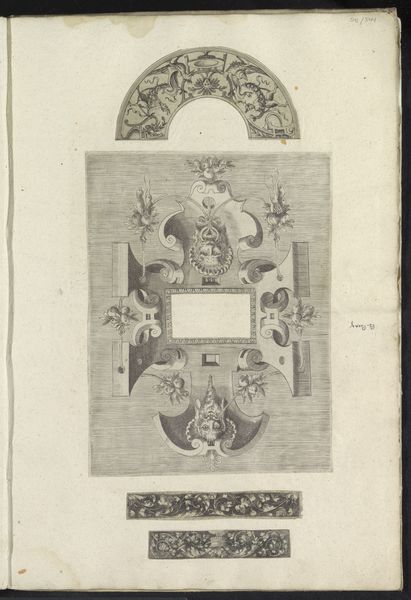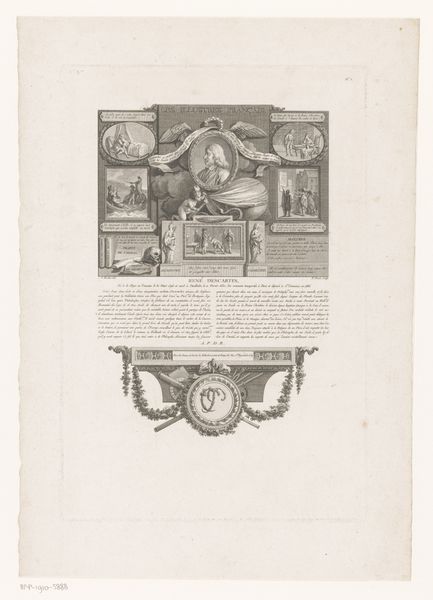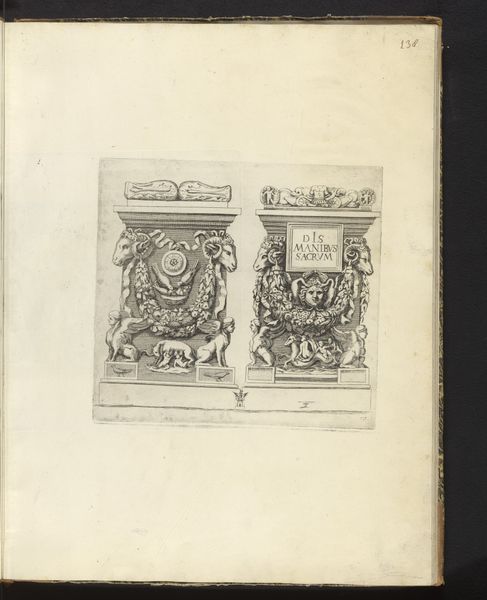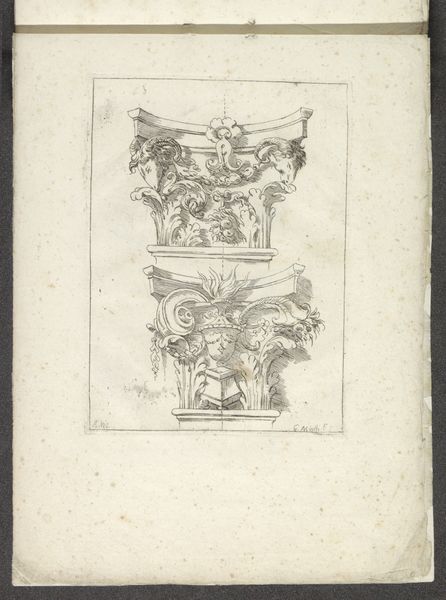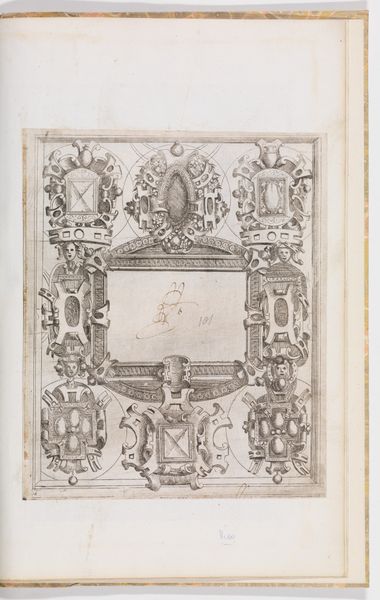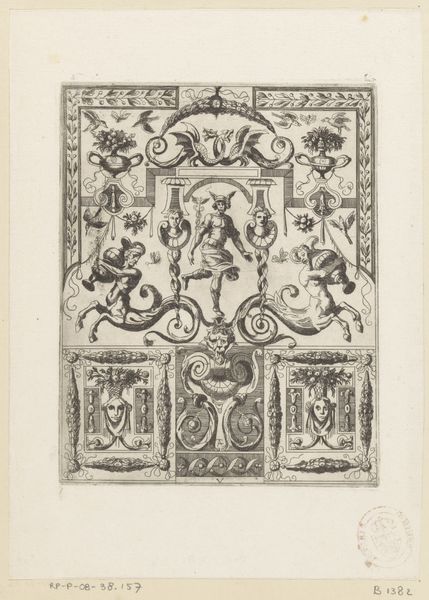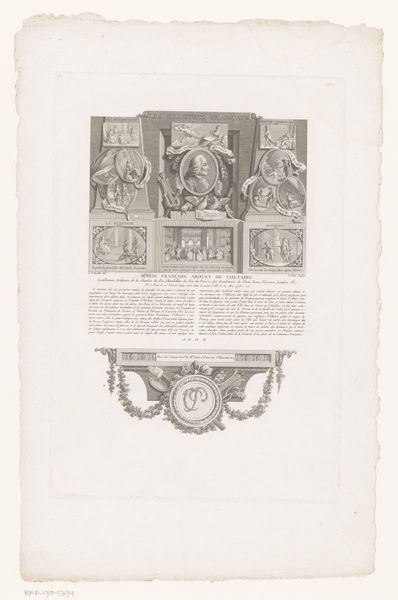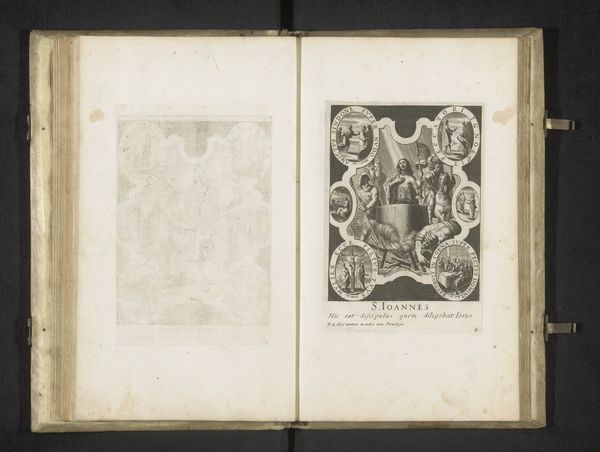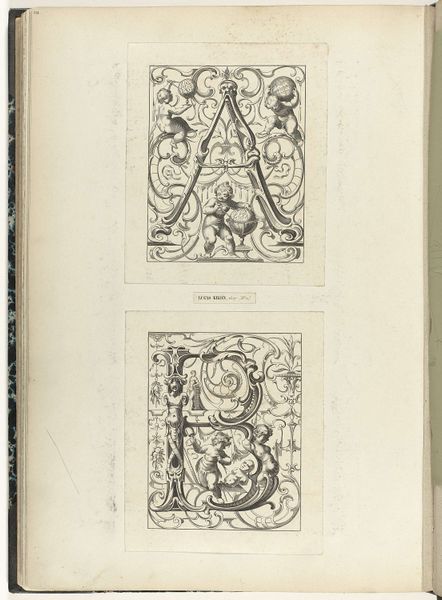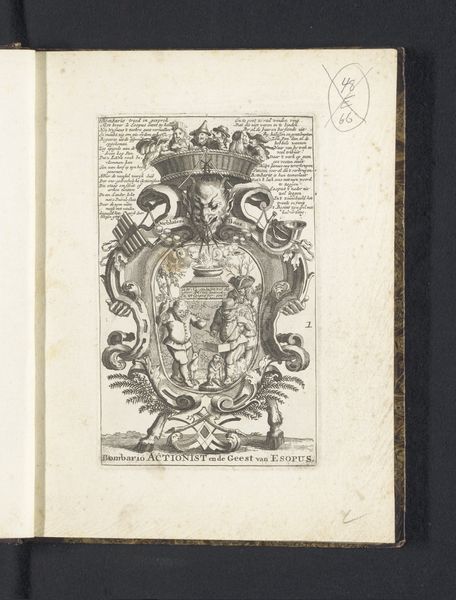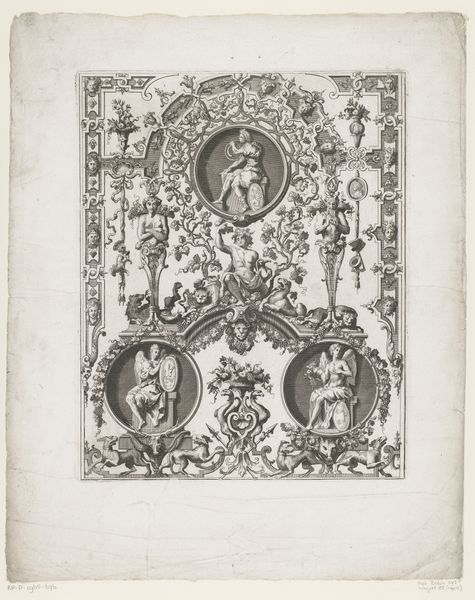
Albumblad met twee prenten met putti in cirkels en ornament 16th century
0:00
0:00
drawing, ornament, paper, ink
#
drawing
#
ornament
#
quirky sketch
#
pen sketch
#
sketch book
#
figuration
#
paper
#
11_renaissance
#
personal sketchbook
#
ink
#
sketchwork
#
pen-ink sketch
#
pen work
#
sketchbook drawing
#
storyboard and sketchbook work
#
northern-renaissance
#
sketchbook art
Dimensions: height 430 mm, width 292 mm
Copyright: Rijks Museum: Open Domain
Curator: This is an intriguing album leaf, attributed to Lucas van Leyden, dating back to the 16th century. It's rendered in ink on paper. Editor: My initial reaction? It feels playful, almost like a doodle page. I’m drawn to the delicate linework and how crammed the page is with ornament and figures. Curator: Exactly! What's interesting is to think about the audience this would have been created for – we’re looking at designs of luxury goods for elite patrons during the Renaissance. Lucas van Leyden’s role transcends artistry; he was instrumental in shaping visual culture. The putti at the top of the page and the more complex design below would suggest they are drawings of different objects. Editor: Speaking of production, what sort of labor went into creating these designs? The precision is remarkable considering this was a hand-drawn process using pen and ink. Also, I'm really intrigued by the prominent placement of those hybrid female figures at the base of the design! Curator: Indeed. The hybridity of those figures, combining human and animal elements, hints at the fluidity of identity during the Renaissance period. Such images challenged the rigid social structures of the time by reimagining and questioning accepted roles, in order to explore power dynamics and marginalization. Editor: And were these designs destined for a specific material or purpose? Metalwork, maybe? It really makes you wonder what became of the translation of these sketches. Was it mass produced? Or did they just remain unique artworks in themselves? Curator: Possibly, for different wealthy patrons, it served as an inspiration catalogue where the customer was able to envision future goods. The design hints at social stratification, suggesting those with affluence dictated style and artistry, thereby upholding pre-existing hierarchies. It invites an ongoing investigation into how our modern interpretations and artistic liberties stand upon the grounds of early innovators. Editor: Absolutely. Analyzing this artwork from a materialist and social point of view allows for it to be an entrypoint in reflecting on class and how those issues are interwoven within craftsmanship itself. Curator: Indeed! Seeing beyond immediate beauty and engaging critically through its role as an artefact from socio-political dimensions enriches our viewing experience. Editor: It’s the blend of design elements combined with socio-political concepts that leave such a lingering impact.
Comments
No comments
Be the first to comment and join the conversation on the ultimate creative platform.
